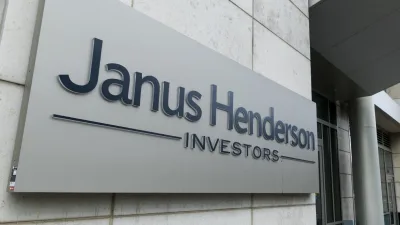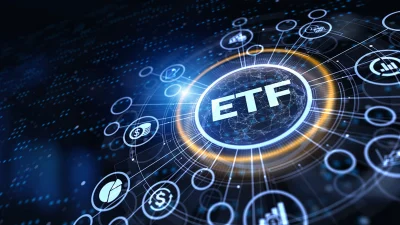The battle between high and low cost ETFs



With active ETFs becoming the latest choice as fund managers target the retail audience, their high fees may be a detractor as research finds investors are shunning those priced any higher than 50 bps.
As fund managers look to reach the retail audience, many are considering launching active ETFs or converting existing vehicles into an ETF structure for a new distribution strategy.
According to Calastone, active ETFs account for around 40 per cent of the market in Australia, nearly double the global average of 24 per cent. More than half of ETF launches year-to-date have been active ETFs from firms, such as Schroders, BlackRock, PIMCO and JPMAM.
Other active ETF launches have come from existing active fund managers, such as GCQ and India Avenue, that are entering the ETF space for the first time to meet adviser demand.
Unlike their passive counterparts, active ETFs are listed on an exchange and traded on demand rather than priced daily which increases their transparency relative to managed funds. Like managed funds, they require decision-making by the portfolio manager with the aim of outperforming the benchmark that requires rebalancing to ensure its assets reflect the investment strategy.
However, because of the above and the costs associated with trading and brokerage fees, they are typically priced higher than passive ones.
Money Management reached out to Morningstar which stated the average asset weighted fee for an Australian active ETF is 97 bps, while it is 23 bps for a passive one.
“The asset-weighted fees are understandably lower [for passive] since there are higher funds under management in lower-fee ETFs. The effect is much more pronounced in passives since the assets are predominantly in cheaper ETFs which track broad global or Australian indexes, rather than the more expensive thematic ETFs,” Morningstar said.
Separate global research by Vanguard found the asset weighted average product cost of both active and passive equity ETFs is higher in Australia than in the UK, US, Europe and Canada.
Fee ranges
According to Morningstar, the largest proportion of active ETFs are priced between 80 and 100 bps, and a small proportion have a fee level of 200 bps or more. On the other hand, most passive ones have a fee level of up to 60 bps, and none are priced more than 100 bps.
But research found that investors prefer those which are priced at the cheapest of the cheap.
Research by EY found two-thirds of industry flows during the first quarter of 2025 went into the 90 passive funds which had an expense ratio of 0–25 bps. This figure is cheap even for passive ETFs with a larger proportion of passive products (110) being concentrated in the higher fee band of 26–50 bps.
Similar figures were shared by Global X which found that of the flows in FY25, nearly two-thirds of net flows went into index ETFs priced at less than 25 bps, and 30 per cent went into those priced between 25 and 49 bps.
In the active space, just 6.4 per cent of flows went into active ETFs priced at less than 49 bps, potentially limited by the small proportion of products marked at this price point. In fact, active ETFs priced above 100 bps were the only category to see outflows during the year.
Percentage of total one-year flows to 30 June 2025
Source: Global X, ASX, Cboe, July 2025
Industry reaction
Speaking to Money Management, commentators Marc Jocum, senior product and investment strategist at Global X ETFs, and Chris Brycki, Stockspot founder and CEO, said it is a misconception that an ETF is affordable, especially for active vehicles. Both flagged that while the inflows into active ETFs may look substantial, much of this comes from funds holding existing assets being converted into ETFs rather than fresh investor inflows.
Brycki said: “Rather than creating lower-cost, fit-for-purpose active products that align with what investors want (simplicity, transparency and value), they’re simply repackaging their existing managed funds into an ETF format.
“High fees are a major reason active funds continue to fail in Australia, and active managers aren’t really using the ETF structure to solve that problem. They’re just hoping the ETF label will attract new money, but the data shows investors are increasingly voting with their feet towards lower-cost, index-based strategies.”
Jocum said: “Contrary to popular belief, ETFs aren’t always synonymous with low-cost, particularly if they are actively managed ETFs. The real divide isn’t active versus passive; it’s high-cost versus low-cost. And low-cost is winning. We’re seeing a clear split between active ETFs that are attracting flows and those that are losing them.”
According to Betashares, 30 ETFs closed during 2024, which was up from eight closures in 2023, although it did not specify whether these were active or passive ones. In terms of the ETFs which saw the largest outflows during 2024, the active Magellan Global Fund (Open Class) (Managed Fund) lost $2.8 billion, while the ActiveX Ardea Real Outcome Bond Fund (Managed Fund) and AB Managed Volatility Equities Fund (Managed Fund) lost more than $350 million each during the year.
The Magellan Global Fund, which has $7.4 billion in assets under management, charges 135 bps in management fee plus a 10 per cent performance fee, which is the same as its unlisted Magellan Global Fund. However, it has consistently underperformed over one, three and five years. For example, the ETF has returned 10.2 per cent over five years to 30 June compared to gains of 15.7 per cent for the MSCI World Index.
Brycki said structuring a fund as an active ETF is unlikely to hide the fact that active funds have been unable to consistently outperform in recent years.
The S&P SPIVA Australia Persistence Scorecard for 2024 found that out of the 195 top-quartile equity funds from 2022, only three remained in the top quartile for the subsequent two years. Of the 127 funds out of 307 Australian equity ones that outperformed the ASX 200 in 2022, only one achieved this feat again in 2023 and 2024.
Meanwhile, Stockspot research found 90 per cent of large-cap active Australian equity funds lagged a comparable index ETF over the past five years.
“Putting these strategies in an ETF wrapper doesn’t make them better value. It just makes their underperformance more visible, because ETFs offer daily pricing and transparent holdings,” Brycki said. “Investors can now clearly see what they’re paying for, what they’re getting, and whether it’s worth the cost.”
Rita Da Silva, EY Oceania wealth and asset management leader, said: “[Active ETF launches] isn’t just about immediate uptake. Many launches are part of a long-term positioning strategy and may be supported by a broader product offering or cross-subsidised by other lines of business.
“That said, ETFs with sustained low AUM and minimal trading volume often face higher costs relative to scale and may be at risk of closure or delisting. Market forces will naturally address underperforming or uncompetitive offerings over time, but strong-performing niche active ETFs can still thrive in the right conditions.”
Jocum added: “The more forward-thinking active ETF issuers understand that Australian investors are increasingly fee-conscious, and they’re responding by launching competitively priced, low-cost active ETFs.”
He suggested the asset-weighted average ETF fee will likely continue to fall, even if the overall average fee rises, due to the launch of more expensive active or complex products.
Recommended for you
Global asset manager Janus Henderson could be acquired after receiving a non-binding acquisition proposal jointly from a private investment firm and venture capital firm.
Investment manager Salter Brothers has partnered with private equity firm Kilara Capital to launch an Australian sustainable investment platform focusing on decarbonisation.
Fresh off launching three active ETFs to the Australian market, Avantis Investors is already planning to expand its range with two further products next year.
Ausbil is growing its active ETF range with an ESG product in collaboration with sister company Candriam.












